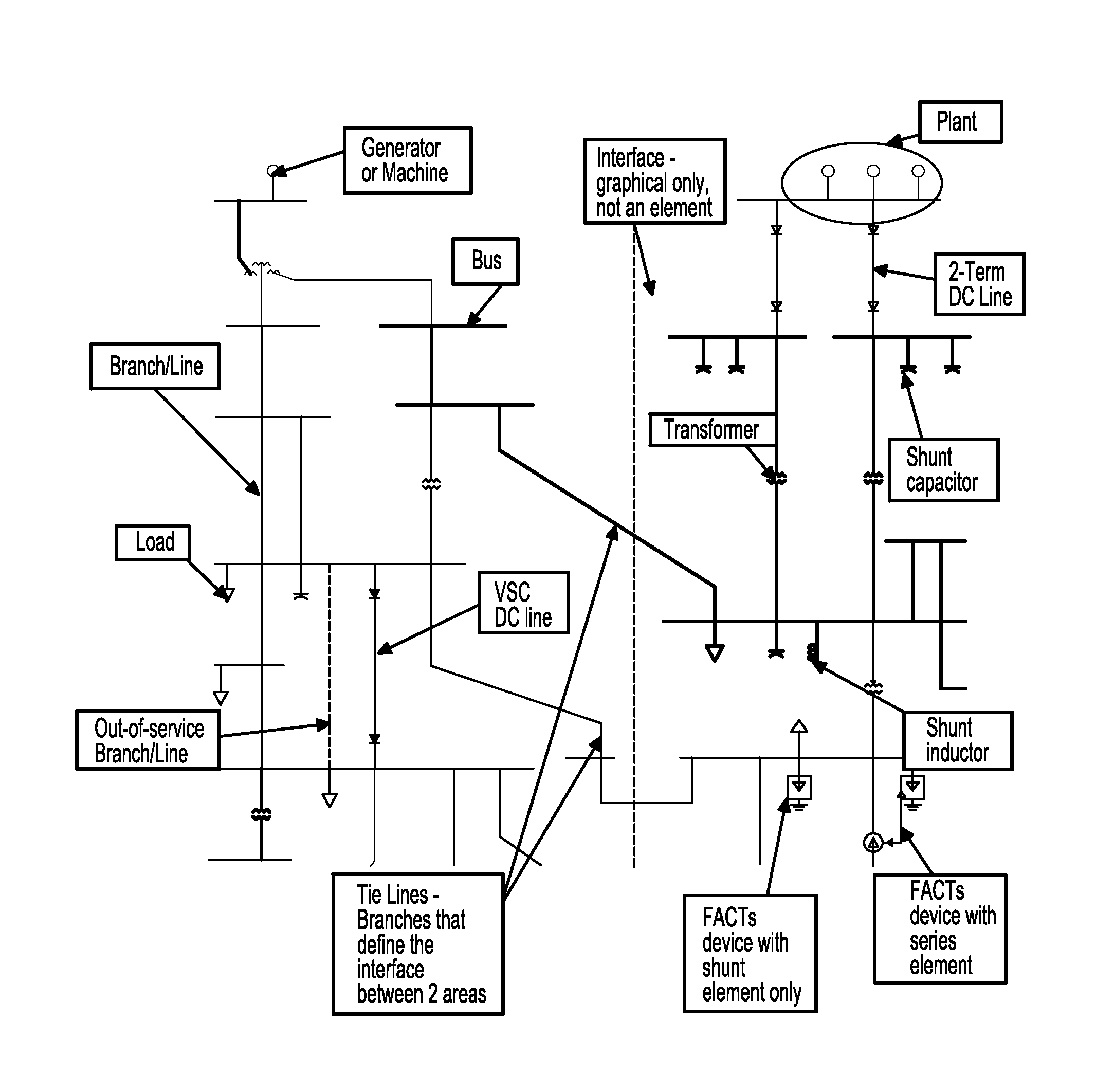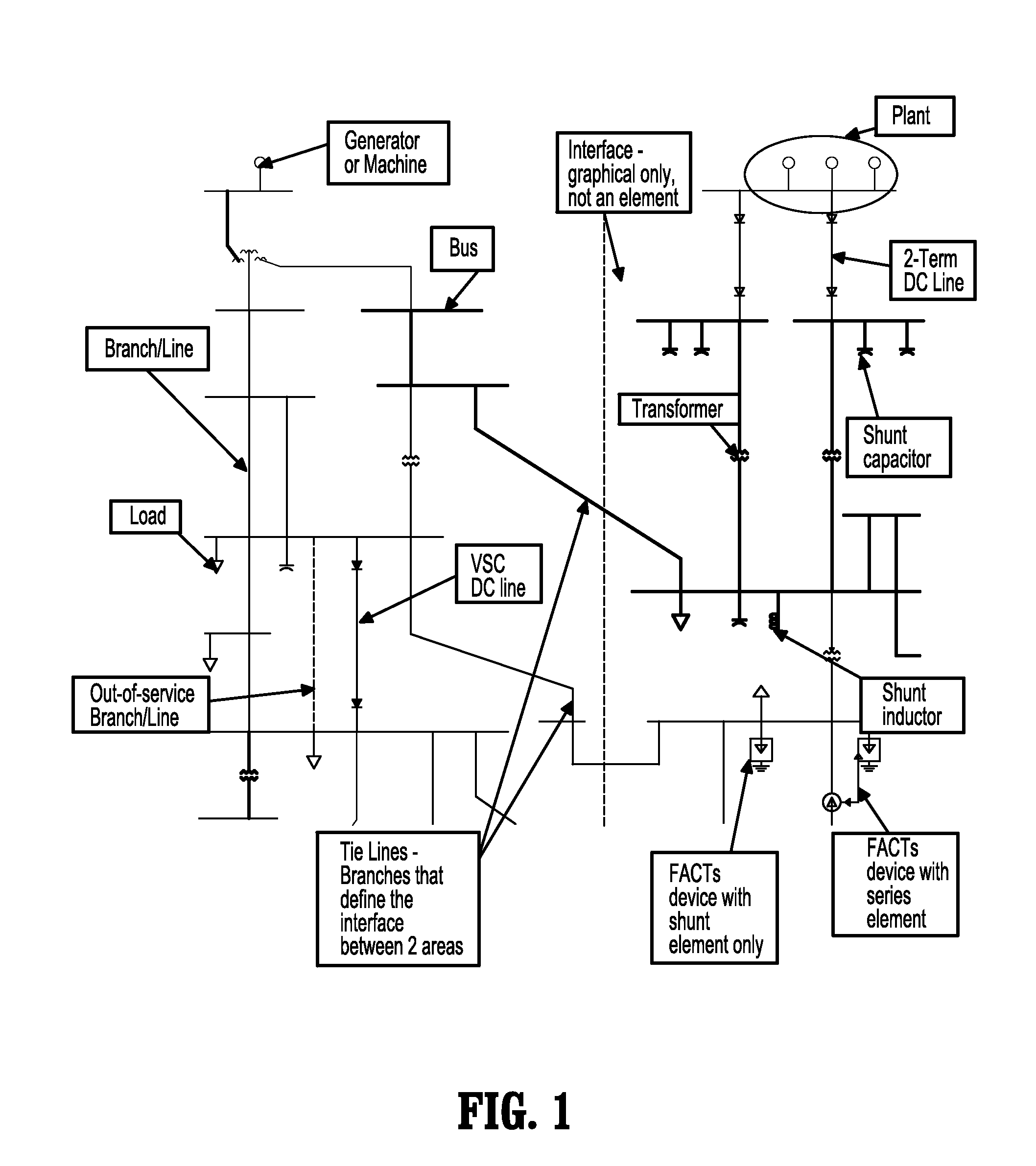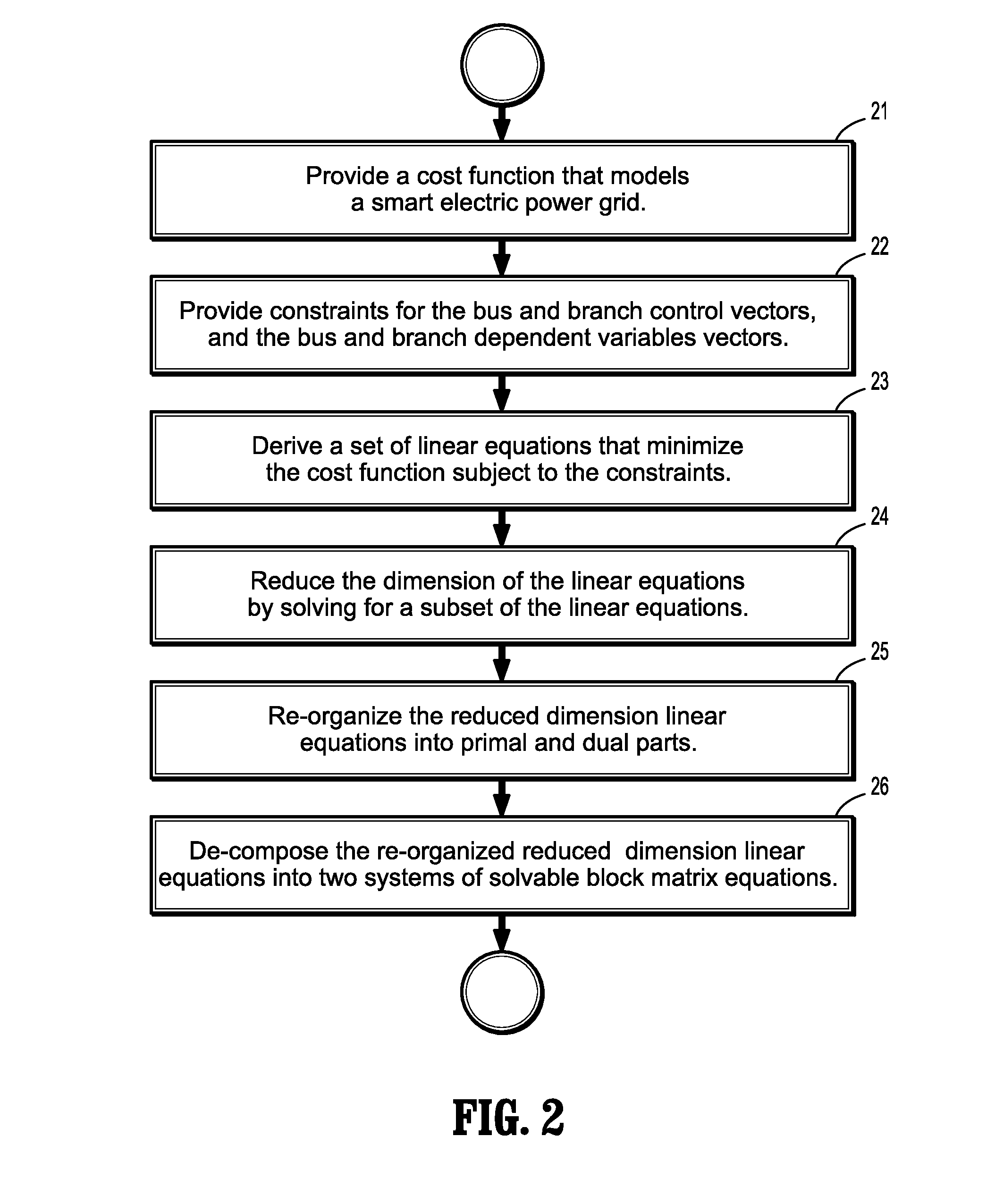Interior point method for reformulated optimal power flow model
a power flow model and internal point technology, applied in the direction of electric variable regulation, process and machine control, instruments, etc., can solve the problems of inability to understand the basic intuitive properties of the inability to solve contingency analysis of power networks, and the thermal limit of transmission lines as well as the constraints of voltage and electrical stability, etc., to achieve optimal power flow and optimal power flow
- Summary
- Abstract
- Description
- Claims
- Application Information
AI Technical Summary
Benefits of technology
Problems solved by technology
Method used
Image
Examples
Embodiment Construction
[0070]Exemplary embodiments of the invention as described herein generally include systems and methods for estimating a solution of an optimal power flow model of a smart power grid. Accordingly, while the invention is susceptible to various modifications and alternative forms, specific embodiments thereof are shown by way of example in the drawings and will herein be described in detail. It should be understood, however, that there is no intent to limit the invention to the particular forms disclosed, but on the contrary, the invention is to cover all modifications, equivalents, and alternatives falling within the spirit and scope of the invention.
[0071]An optimal power flow (OPF) model seeks to produce an optimal power flow solution that balances generation / consumption for all buses with power distribution across all connected branches such that the overall system state, as measured by underlying physical parameters including voltages and phase angles, is feasible and safe. A base...
PUM
 Login to View More
Login to View More Abstract
Description
Claims
Application Information
 Login to View More
Login to View More - R&D
- Intellectual Property
- Life Sciences
- Materials
- Tech Scout
- Unparalleled Data Quality
- Higher Quality Content
- 60% Fewer Hallucinations
Browse by: Latest US Patents, China's latest patents, Technical Efficacy Thesaurus, Application Domain, Technology Topic, Popular Technical Reports.
© 2025 PatSnap. All rights reserved.Legal|Privacy policy|Modern Slavery Act Transparency Statement|Sitemap|About US| Contact US: help@patsnap.com



